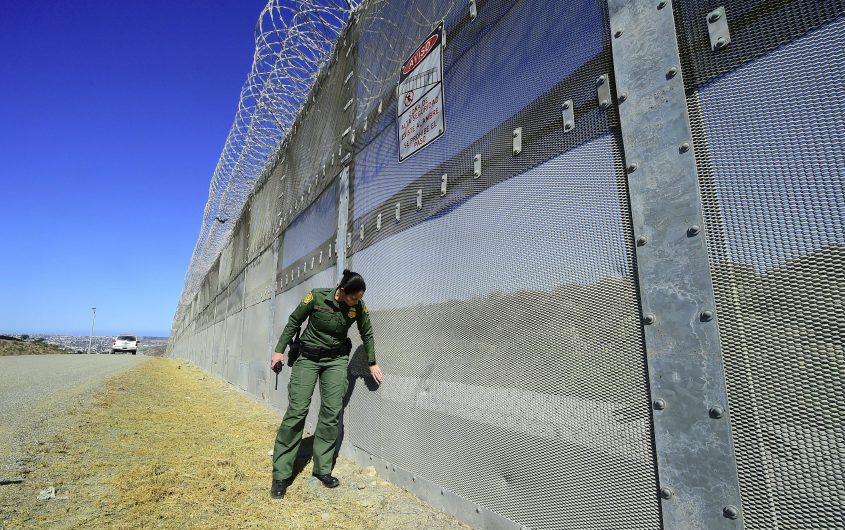
FREDERIC J. BROWN/AFP/Getty Images
Migration – A Global Reality or Threat

Susanne Dieper
Director of Programs and Grants
Susanne Dieper is the Director of Programs and Grants at AICGS. She oversees the Institute’s programs and projects within the three AICGS program areas, manages all AICGS fellowships, and is in charge of grant writing. Her current focus is on issues related to transatlantic relations, immigration and integration, diversity, the next generation of leaders, workforce education, and reconciliation. She develops programs that align with the mission of AICGS to better understand the challenges and choices facing Germany and the United States in a broader global arena.
Previously, Ms. Dieper was in charge of organizational and project management at AICGS as well as human resource development and board of trustees relations. Prior to joining AICGS, she worked in transatlantic exchange programs, language acquisition, as well as the insurance industry in Germany.
Ms. Dieper holds an MBA from Johns Hopkins University with a concentration in International Business and an MA in English Linguistics and Literature, History, and Spanish from the University of Cologne. She has completed course work in nonprofit management at Johns Hopkins University.
__
On December 12, 164 nations ratified the United Nations-Migration Pact (or Global Compact for Safe, Orderly and Regular Migration) at a UN conference in Marrakesh, the very first of its kind. The final text of the pact was adopted by 192 of the 193 member states in July 2018, after a year of negotiations. The U.S. was the only nation that declined to commit to it, citing unacceptable interference in U.S. immigration policies. As months passed, several other nations changed their minds and followed the U.S. example, despite the fact that the pact is not legally binding. Those opting out include, not surprisingly, Poland, Austria, and Hungary, as well as Belgium, which suffered a government crisis over the issue, the Netherlands, and Israel. Some of the non-signers are continuing to debate the document within their parliaments.
Fear over meddling in national immigration policies, undermining overall sovereignty, and blurring the line between legal and illegal immigration are among the non-signers’ main objections. Moreover, several of the nations in opposition practice restrictive refugee policies, including Israel and the United States, and regard refugees as illegal immigrants. For months, conspiracy theories have proliferated on the Internet, stating that the pact endangers a nation’s sovereignty and its democracy and will allow for uncontrolled mass migration. In Germany, the right-wing Alternative for Germany (AfD) put up its own website “Stop the Migration Pact” (“Migrationspakt stoppen”) and continues to warn that Germany will be overrun by migrants. AfD members seized on the Migration Pact early on and fueled debates in the Bundestag in an effort to undermine Chancellor Merkel’s steadfast commitment to the pact. While interior minister Horst Seehofer did not waiver in his support for the pact, health minister Jens Spahn voiced his hesitation. In the end, both coalition parties (CDU/CSU and SPD) showed almost unanimous support for the pact, along with the other parties represented in the Bundestag, with the exception of the AfD.
The U.S. continues to deploy active duty troops to its southern border, ostensibly in an effort to defend the country against a caravan of refugees from Central American countries. President Trump has characterized migrants as a great threat to the nation. In November, tear gas was deployed against those trying to cross the border, among them women and children. In early December, a seven-year-old migrant girl who had crossed the U.S. border with her father and was taken into custody died hours later from dehydration and exhaustion. Worldwide, about 60,000 migrants have died since 2000. It is clear that the United States faces a migration challenge at its borders and would therefore have every reason to support a global solution to migration. Alas, the U.S. is going it alone on many fronts these days. And the Migration Pact very much has a joint, multilateral purpose—anathema to the current administration.
The UN views migration as a global issue—there are currently 250 million migrants in the world—that can only be tackled jointly. The Migration Pact aims to provide guidelines to the world on how to handle migration not as a disaster, but rather as a reality and an opportunity for societies and their economies. At its core is the fact that migration involves human beings, not goods or services. It sets out to counter prejudices and preferences. The legally non-binding pact regulates migration flows and the rights and safety of refugees, with a particular focus on the protection of women and children, not least to mitigate human trafficking and abuse. Avoiding infringements on the sovereignty of individual states is explicitly stated in the final text. It aims to address all dimensions of global migration and puts forth twenty-three goals. One of its top goals is to improve cooperation among nations. It intends to fight flight reasons and regulate migration—or in other words, reduce illegal migration and protect receiving countries against an influx of low-wage workers.
Migration is a fact and it is of global consequence. Opting out of regulating migration might lead to short-term political gains but will, in the long run, do more harm than good to those fleeing and those receiving. As the UN rightly admonishes, this is about human beings and their well-being. What else needs to be said? Perhaps some must fix their moral compasses first.
The UN General Assembly is scheduled to endorse the pact on December 19.








